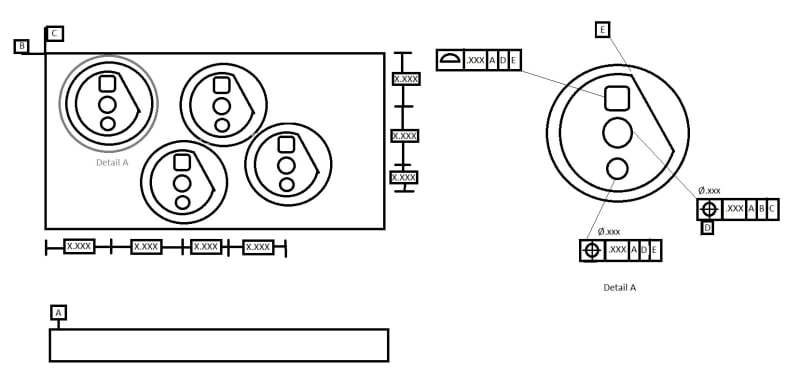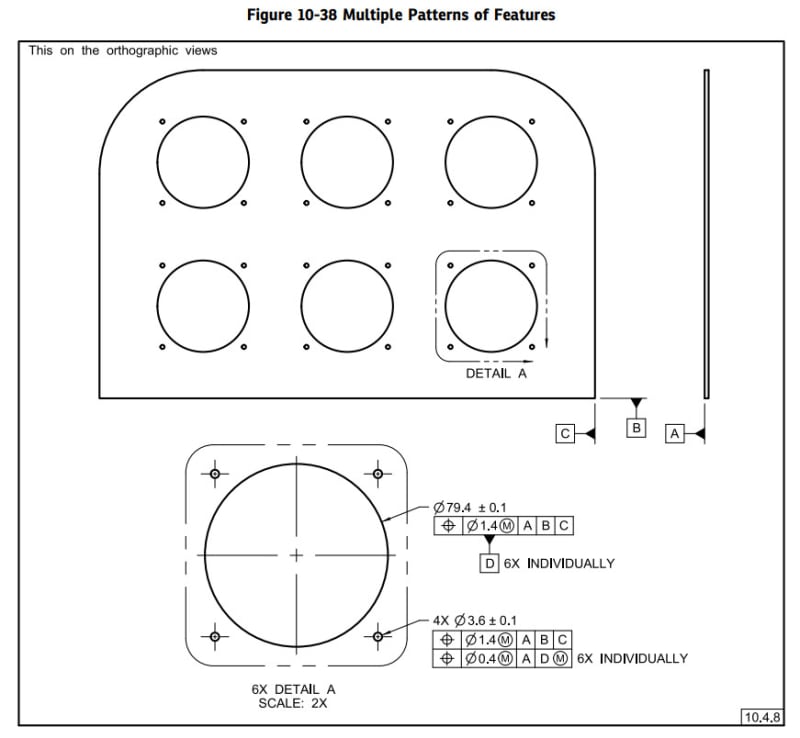I have large rectangular part with several identical patterns in different locations with datums called out to the main part and some features to the localized pattern. See the mockup sketch attached, these are not my actual features but mimic what I am seeing.
Yes I know I didnt draw all the basics, and i didnt draw all the depths, etc. Its more how do I call out the following:
In Detail A you can see the center hole is called out as datum D, location controlled by A|B|C
The other 2 features in the pattern call out profile or position to A|D|E
This pattern is repeated multiple times.
In the next pattern location the profile will be called out to that respective center bore, and clocking flat.
Can I call the detail A out multiple times (4x in this example) and will that imply to use the localized datums? Or do I have to do a detail circle for each of the pattern locations?
Hopefully what I am asking makes sense?

________________________________
Ryan M
Quality Engineer
3d Printer Hobbyist
Yes I know I didnt draw all the basics, and i didnt draw all the depths, etc. Its more how do I call out the following:
In Detail A you can see the center hole is called out as datum D, location controlled by A|B|C
The other 2 features in the pattern call out profile or position to A|D|E
This pattern is repeated multiple times.
In the next pattern location the profile will be called out to that respective center bore, and clocking flat.
Can I call the detail A out multiple times (4x in this example) and will that imply to use the localized datums? Or do I have to do a detail circle for each of the pattern locations?
Hopefully what I am asking makes sense?

________________________________
Ryan M
Quality Engineer
3d Printer Hobbyist


![[upsidedown] [upsidedown] [upsidedown]](/data/assets/smilies/upsidedown.gif)